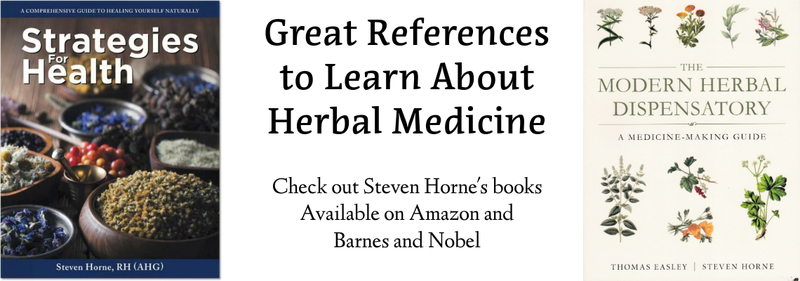
Problems with gut health have skyrocketed in the last few decades. It has been estimated that as high as two-thirds of Americans have problems with digestive health, like dysbiosis, IBS, and leaky gut. These intestinal problems are likely contributing to the increase in allergies and autoimmune disorders, as well as mental health issues like anxiety and depression.
As part of this problem, many people are becoming intolerant to gluten, a protein that contributes to leaky gut. Thus, avoiding grains with gluten, like wheat, barley, spelt, and rye, is an important part of healing the gut. Corn may also be a problem for many people, as most of the corn products in the US now come from genetically modified corn, which is heavily sprayed with glyphosate. This adversely affects gut flora and may be a significant contributing factor in the rise of gut health issues.
Rice: A Healthy Grain
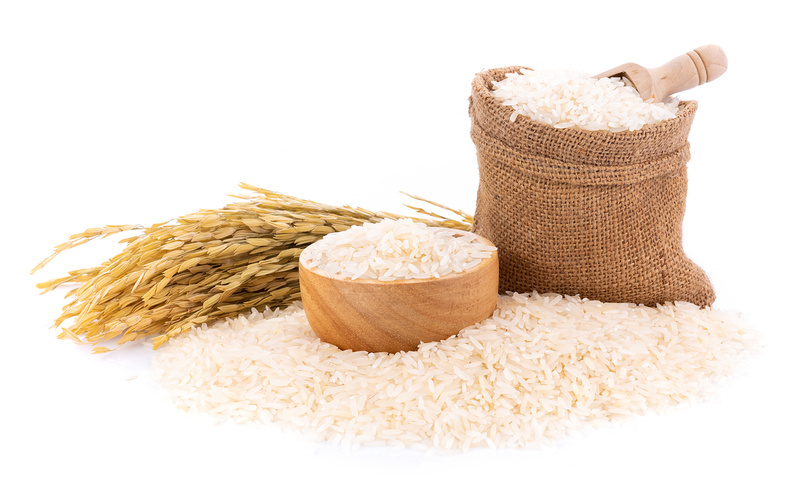 It may be strange to think of rice as a medicine, but rice does have medicinal uses and health benefits. One of these is its beneficial effect on the intestines. It is free from gluten and doesn’t cause allergic reactions. Plus, rice has some gut-healing properties. Furthermore, certain types of rice have additional health benefits.
It may be strange to think of rice as a medicine, but rice does have medicinal uses and health benefits. One of these is its beneficial effect on the intestines. It is free from gluten and doesn’t cause allergic reactions. Plus, rice has some gut-healing properties. Furthermore, certain types of rice have additional health benefits.
Rice is by far the most popular grain worldwide, being consumed regularly by about two-thirds of the world’s population. It is a true grain, which means it’s the seed of a member of the grass family, just like oats, wheat, barley, and corn.
Rice as Part of a Mild Food, Gut-Healing Diet
 One of the healing techniques I learned early in my career was the mild food diet. LaDean Griffin, John Christopher, and other Utah-based natural healers frequently used versions of this diet to support the healing process. On a mild food diet, one abstains from all processed and refined foods, animal products, and seed-based plant foods like nuts, grains, and legumes, and eats only fruits and vegetables for a period of time, with a high percentage of those being raw.
One of the healing techniques I learned early in my career was the mild food diet. LaDean Griffin, John Christopher, and other Utah-based natural healers frequently used versions of this diet to support the healing process. On a mild food diet, one abstains from all processed and refined foods, animal products, and seed-based plant foods like nuts, grains, and legumes, and eats only fruits and vegetables for a period of time, with a high percentage of those being raw.
A mild food diet has similar health benefits to fasting, especially if it focuses on non-starchy vegetables instead of high-starch vegetables like potatoes and high sugar fruits like pineapple, grapes, cherries, mangos, and pears. If you suspect that your problems may be arising from problems in your GI tract, adopting a type of mild food diet may be helpful. This diet is based on eating organic brown rice with non-starchy vegetables like chard, kale, broccoli, cauliflower, onions, carrots, squash, zucchini, green peas, and green beans. These vegetables should be steamed or stir-fried. It’s OK to use some herbs and spices for flavoring. Bragg’s Liquid Aminos should be used as condiment instead of soy sauce. Exclude all nightshade vegetables (tomatoes, potatoes, peppers, and eggplant) on this diet as they are common allergens.
If you feel better and have more energy after several days on this simple diet, then it is likely that some of the foods you had been eating are irritating your digestive system contributing to your health issues. You can gradually introduce suspect foods back into your diet and keep a record of what you eat and how you feel after eating it. This will help you identify foods that are causing you problems.
Rice Water as an Intestinal Remedy
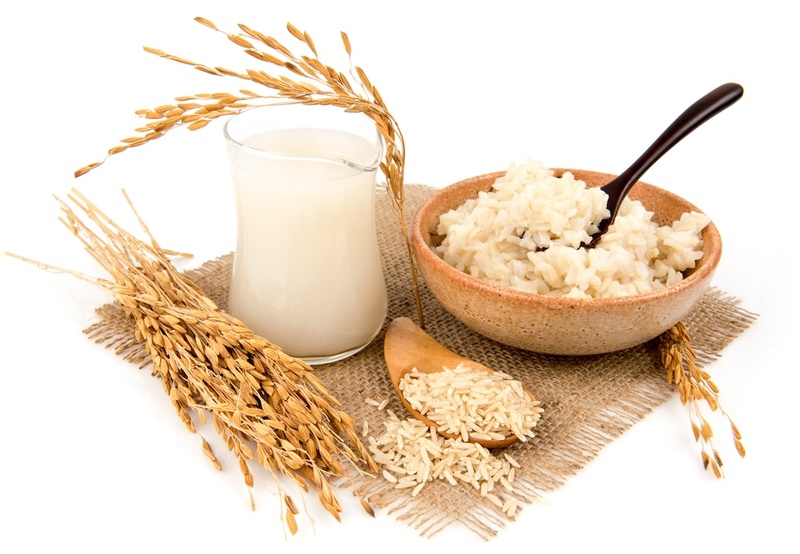 I suggest using rice as an intestinal remedy because it has gut-soothing properties. Like barley water, rice water has been used to soothe an irritated GI tract when a person is suffering from gastroenteritis, food poisoning, or diarrhea. It's also used in TCM to tonify the stomach and spleen.
I suggest using rice as an intestinal remedy because it has gut-soothing properties. Like barley water, rice water has been used to soothe an irritated GI tract when a person is suffering from gastroenteritis, food poisoning, or diarrhea. It's also used in TCM to tonify the stomach and spleen.
To make rice water to soothe gastrointestinal irritation, start by rinsing the rice thoroughly. This is especially important if you’re using white rice because it removes any residues from the material used to polish the rice. Soak the rice for eight hours (overnight) in a pot with six parts water to one part rice. Drain, then rinse the rice again. Simmer the rice in eight parts water to one part rice until the rice is very soft and starts to dissolve. You can then blend the entire mixture and drink it.
Rice water can also be used topically to soothe irritated skin or as a hair rinse. There are other ways to make it, especially if you need a quicker method. For more information, read 4 Ways to Make Rice Water + How to Use by Sarah Pope.
Using Rice as Medicine
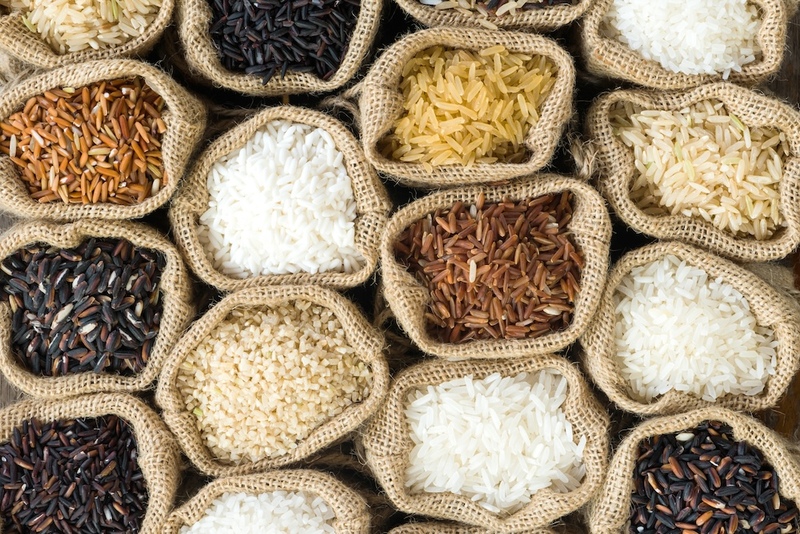 Saikat Sen, Raja Chakraborty, and Pratap Kalita, the authors of a published study, Rice - Not Just a Staple Food, indicate many potential uses for rice in healing. This is especially true for compounds found in the rice bran, which is removed when making white rice.
Saikat Sen, Raja Chakraborty, and Pratap Kalita, the authors of a published study, Rice - Not Just a Staple Food, indicate many potential uses for rice in healing. This is especially true for compounds found in the rice bran, which is removed when making white rice.
The bran from colored rice varieties (red or black) is high in antioxidants, which help prevent chronic and degenerative diseases. Rice also contains fibers and compounds that protect the gastrointestinal membranes. It also promotes a healthier gut microflora. Rice has anti-inflammatory properties and helps protect the liver, kidneys, heart, blood vessels, brain, and nerves from oxidative stress and inflammation. Colored rice also contains immune-modulating compounds, which is why it can be helpful in diets for overcoming allergies and autoimmune conditions. Rice may even have benefits that reduce cancer risk.
Selecting the Right Kind of Rice
 None of the health benefits listed above will be obtained by eating polished white rice. But depending on the color of rice, you will obtain different benefits. Brown rice is rice that still contains the bran layer of the rice kernel. This means it contains more protein, fiber, and vitamins than white rice, just like whole wheat contains more nutrients than white flour. However, other colors of rice have even more health benefits.
None of the health benefits listed above will be obtained by eating polished white rice. But depending on the color of rice, you will obtain different benefits. Brown rice is rice that still contains the bran layer of the rice kernel. This means it contains more protein, fiber, and vitamins than white rice, just like whole wheat contains more nutrients than white flour. However, other colors of rice have even more health benefits.
Whole grain red rice has a bran layer that provides fiber, vitamins, and minerals like brown rice, but the red pigments come from anthocyanins, which are antioxidants. Black rice has a dark purplish to black color because it contains even more antioxidant anthocyanins. It is also higher in protein and iron than other types of rice.
The brown, red, and black rice varieties come from the species Oryza sativa, but there is one more healthy form of rice that comes from aquatic grasses in the genus Zizania. Known as wild rice, these species are also loaded with vitamins, minerals, protein, fiber, and antioxidants like black rice. For a more comprehensive list of rice varieties, see 50 Types of Rice From A to Z.
Using Rice as Medicine
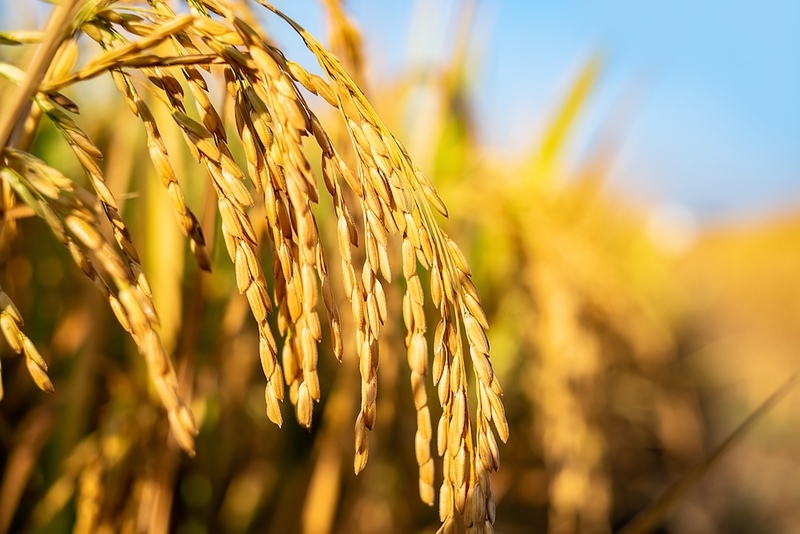 Various types of rice are used in Ayurvedic medicine for healing various health problems. I found a great article Rice as Medicine: Choosing the Right Grain for Your Health Needs which suggests different types of rice for different health issues. Another good article I found was Medicinal Health Benefits of Traditional Rice. Based on these articles and a few other sources, here are a few tips on using rice for healing.
Various types of rice are used in Ayurvedic medicine for healing various health problems. I found a great article Rice as Medicine: Choosing the Right Grain for Your Health Needs which suggests different types of rice for different health issues. Another good article I found was Medicinal Health Benefits of Traditional Rice. Based on these articles and a few other sources, here are a few tips on using rice for healing.
For balancing blood sugar, eat brown, red, or black rice because these varieties are higher in fiber and have lower glycemic indexes. This means that they will help prevent blood sugar spikes. In addition, the anthocyanins in black rice help reduce insulin resistance. These varieties of rice may also help with weight loss.
Black rice is one of the best varieties for anemia because it is high in iron, but red rice may also be helpful. Cooked dark, leafy green vegetables will also aid iron absorption when eaten with the rice. Brown and red rice are recommended for heart health because they contain antioxidants, magnesium, and fiber. These kinds of rice may help lower LDL cholesterol and have a protective effect on the heart.
Rice contains a resistant starch, which means the body doesn’t digest it easily. This starch serves as a food for healthy gut flora. Thus, using a whole grain, organic rice instead of other grains may help with correcting intestinal dysbiosis. Rice may also be helpful for people with sensitive digestive systems or as a food for convalescence (recovery from chronic illness). Rice combined with legumes (like lentils) also provides a complete plant-based protein.
Rice in Traditional Chinese Medicine (TCM)
 Rice is used in TCM as a tonic for the stomach and spleen. It is sweet and cool in its energy and acts as a tonic for the lungs and digestive tract. It is used to treat diarrhea, fatigue, and irritability. It is also used with other herbs and is particularly helpful in reducing digestive irritation from cold or harsh herbs.
Rice is used in TCM as a tonic for the stomach and spleen. It is sweet and cool in its energy and acts as a tonic for the lungs and digestive tract. It is used to treat diarrhea, fatigue, and irritability. It is also used with other herbs and is particularly helpful in reducing digestive irritation from cold or harsh herbs.
In TCM herbs are sometimes cooked with rice as a way of delivering the medicine in an easier-to-consume form. One example is cooking rice with astragalus as a tonic for preventing infections in the lungs during the cold months of winter.
Sprouted rice or millet is also used as a medicine in TCM. Known as Gu Ya, it is used as a digestive tonic to improve appetite, aid digestion, and reduce food stagnation. It is often combined with codonopsis and atractylodes as a digestive tonic. I find it interesting that millet is also used, because millet is also a non-allergenic, gluten-free grain that is well tolerated by people with GI tract issues.
Consuming Rice for Health
 If you want the health-promoting benefits of rice as a medicine, choose red or black varieties, or a mixture of brown rice with red and black rice. That way, you’ll obtain the best antioxidant, anti-inflammatory, and immune-modulating benefits. Rinse rice thoroughly several times before cooking it. As with other grains, letting it soak in water overnight before cooking it will make it easier to cook and digest.
If you want the health-promoting benefits of rice as a medicine, choose red or black varieties, or a mixture of brown rice with red and black rice. That way, you’ll obtain the best antioxidant, anti-inflammatory, and immune-modulating benefits. Rinse rice thoroughly several times before cooking it. As with other grains, letting it soak in water overnight before cooking it will make it easier to cook and digest.
My personal favorite is Forbidden Rice, a variety of black rice that was once reserved only for Chinese emperors. It is high in protein and iron, and the highest in the antioxidant anthocyanins. I find it particularly tasty, and it makes an excellent chicken and rice soup or as the basis of a stuffing for baked chicken. It’s available now at many health food stores and even some grocery stores.
My other favorite way to use rice is to cook a blend of brown, red, and black rice. This is even better if the mixture includes some wild rice. Wild rice is both tasty and nutritious, but it is difficult to grow and thus tends to be expensive. Adding a little of it to a rice blend makes it more affordable to consume. It also adds a richer flavor to the rice mixture.
As suggested above, rice with non-starchy vegetables and some form of lentils makes an excellent low-calorie, complete protein meal. I also like to eat rice with fermented vegetables like kimchi or sauerkraut to promote gut health.
Steven's Articles
-

-
The Evidence for Berberine
A yellow alkaloid found in traditional infection-fighting…
-

-
The Sensible Use of Caffeinated Herbs
Kola nuts, guarana, and yerba mate and other herbs…
-

-
The Health Benefits and Problems with Coffee
This popular caffeinated beverage can be beneficial…
October
-

-
Understanding Caffeine & Cellular Adaptation
Preserving the power of caffeine's buzz and the…
September
-

-
Horseradish
A pungent spice for aiding protein metabolism…
-

-
Banaba or Crepe Myrtle
A beautiful tree from Southeast Asia whose leaves…
August
-

-
Monkeyflowers
Flower essences to help see ourselves more clearly…
-

-
Mariposa Lilies
Strengthening the bond between mother and child…
-

-
The Noble Bay Leaf
A common kitchen herb for aiding digestion and…
-

-
Epimedium: Horny Goat Weed
A circulatory stimulant and kidney yang tonic…
July
-

-
The Medicinal and Nutritional Benefits of Apricots
A nutritious fruit and valuable medicinal seed for coughs
-

-
Dogwoods
Asian dogwood is used to stop excessive discharge,…
June
-

-
Neem: The Village Pharmacy
A popular Ayurvedic remedy for dental and immune…
-

-
Spilanthes: The Toothache Plant
A traditional remedy for teeth and gums, as well…
-

-
Forsythia
An anti-inflammatory, fever-reducing, and infection fighting herb

